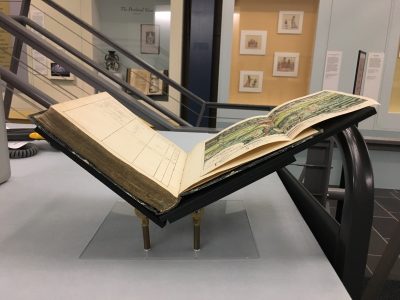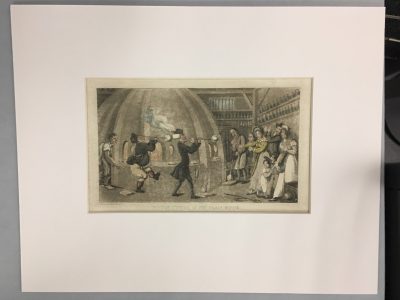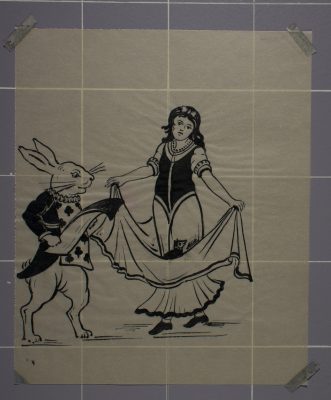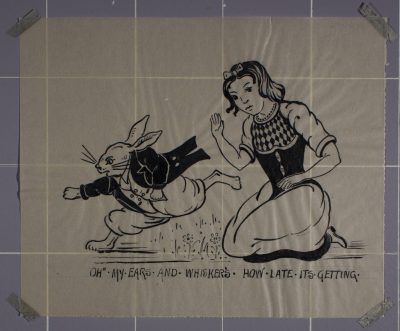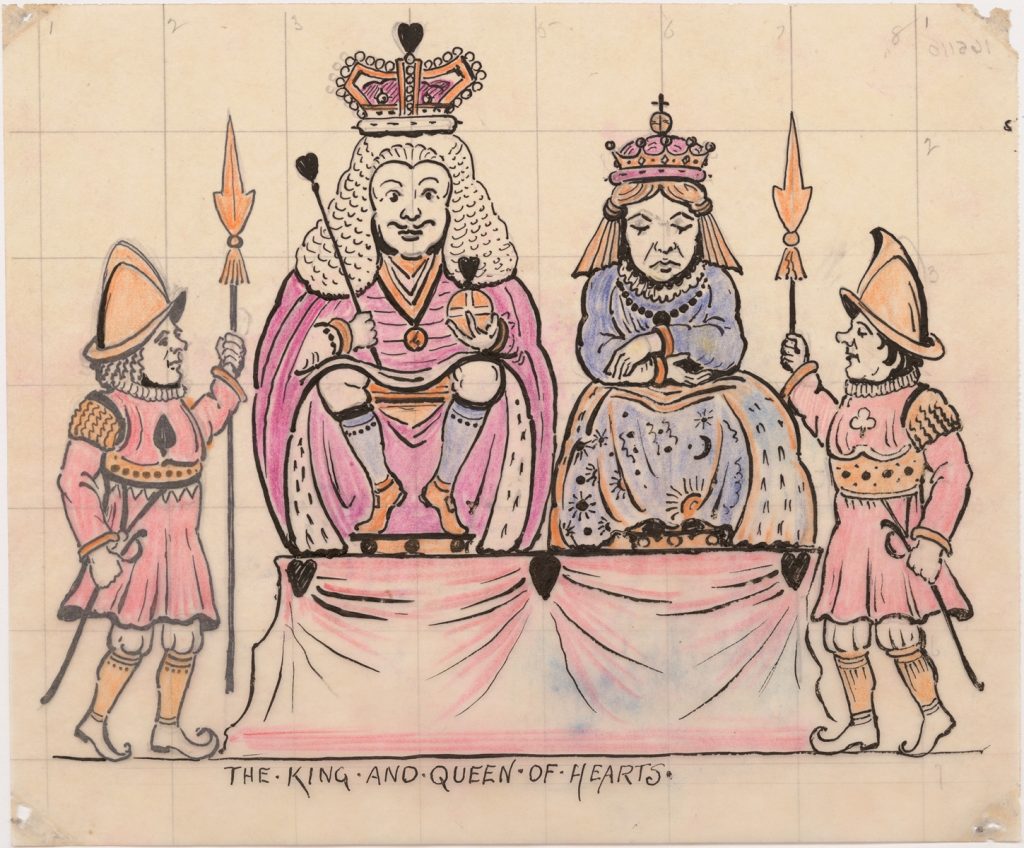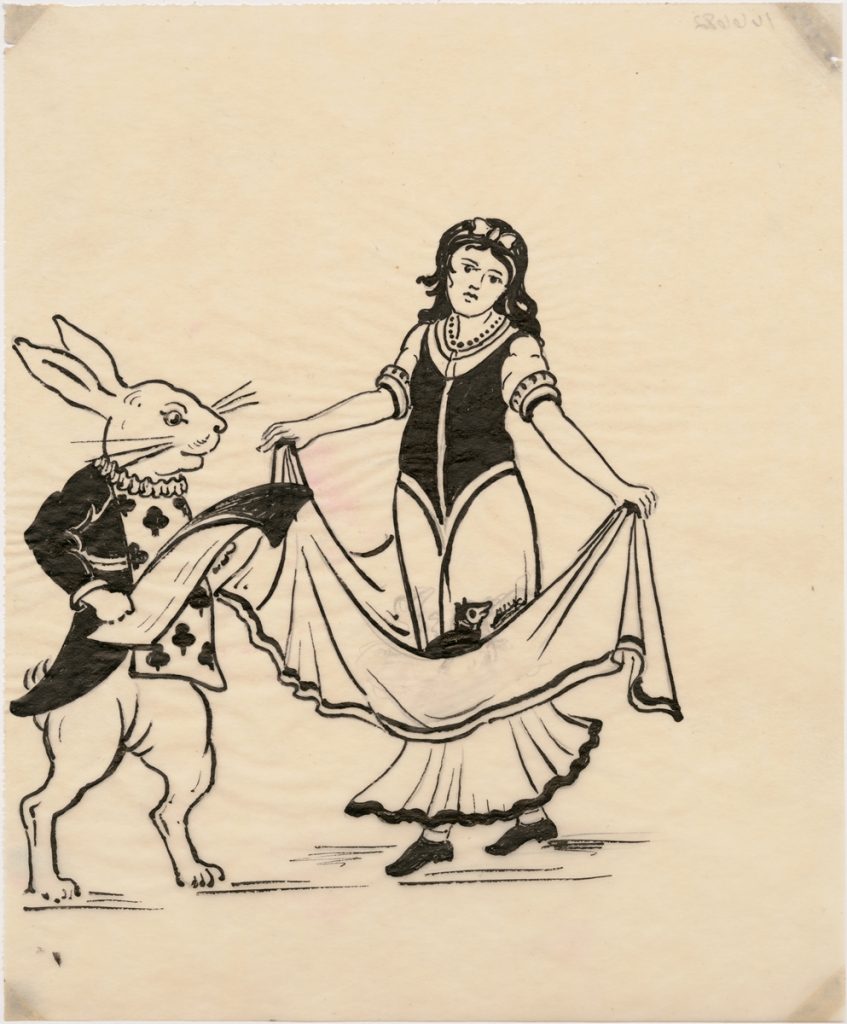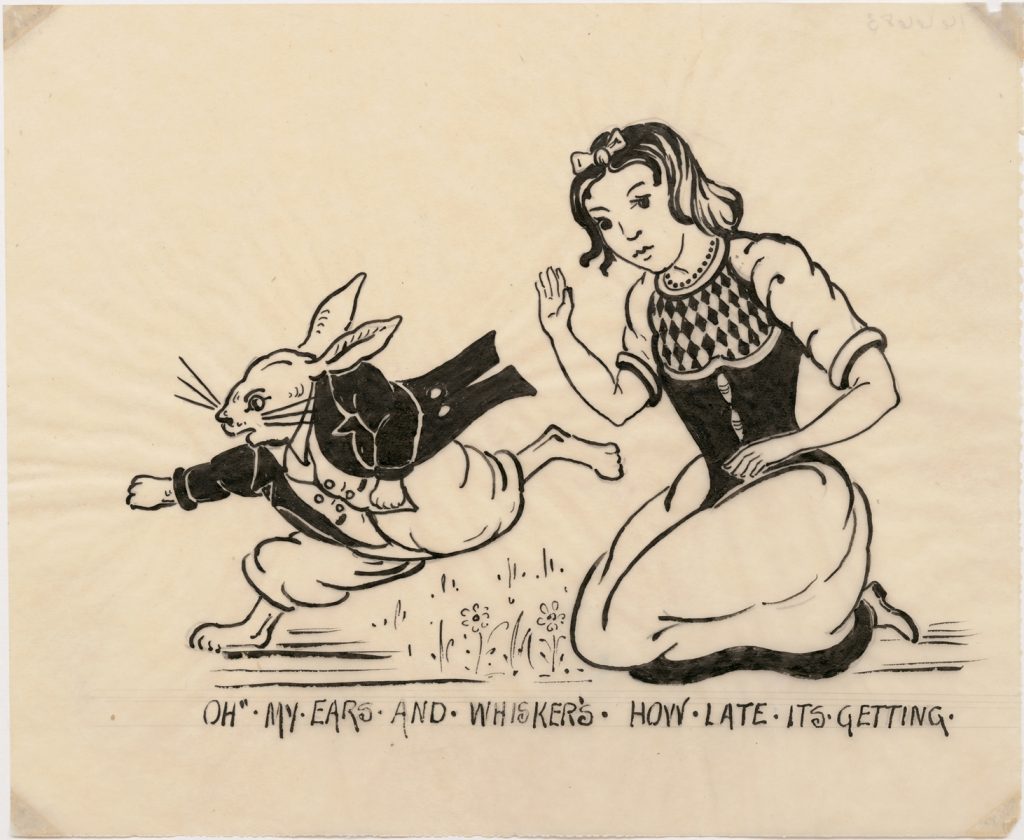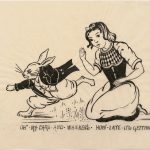
This post was written by Moya Dumville, paper conservator at West Lake Conservators.
One of the most difficult aspects of working as a conservator is striking a balance between seeing an object and saving an object. Art, obviously, needs to be put on display so that it can be enjoyed and appreciated, but merely putting it on display can put it at risk. Exposure to light, fluctuations in temperature and humidity, handling, mounting and exhibition are all things that can damage works of art. It’s the work of conservators, together with curators, archivists and librarians, to ensure that these risks are mitigated as much as possible.
A good example of the balance between ‘seeing vs. saving’ is lighting. For example, art must be displayed in light bright enough to be visible, but not so bright as to damage it. Light can be a significant source of risk for art, particularly if the medium is paper. Media can fade, and paper yellow, darken, and/or become brittle. Works of art must also be displayed in a way that won’t cause physical damage — care should be taken to ensure that objects are displayed in archival window mats, and that books are only opened to an angle that will not cause damage to the bindings. Book cradles are constructed specifically for this job — to hold books open at an angle that will allow selected pages to be visible, while supporting the covers, text block, and binding. Most paper objects are not recommended for display for more than three months at a time, and should be exhibited in low light levels and stable, moderate temperature and humidity. After being displayed for three months, it is recommended that these objects be ‘rested’ for a period of 10 years, in order to preserve their life span.
- An example of a book resting on a custom book mount in the Curious and Curiouser exhibition. Die Wanderschaft des Glasergesellen Gustav Friedrich Faassen: von ihm selbst beschrieben, Gustav Friedrich Faassen, 1845. CMGL 140012, purchased in part with funds donated by Jay and Micki Doros.
- An example of a matted print in the Curious and Curiouser exhibition. Doctor Syntax in the glass house, Thomas Rowlandson, London: R. Ackermann, [1820]. CMGL 149762.
The exhibition Curious and Curiouser:Surprising Finds from the Rakow Library, currently on display at the Rakow Library will be on display for two years, but will rotate paper-based works of art every three months in order to reduce the amount of light exposure each individual item receives. Before going on display, all items were examined by a conservator, and a condition report and exhibition recommendations were created for each individual object. In some cases, conservation treatment is undertaken in order to stabilize or aesthetically improve an object. For Curious and Curiouser, I was fortunate to have the opportunity to treat the Alice in Wonderland drawings that were slated for exhibition.

Before treatment photograph of The King and Queen of Hearts, Frederick Carder, [1880-1959]. CMGL 165110.
When the drawings arrived at the labs at West Lake Conservators for treatment, many of them had been mounted onto an acidic, black construction paper with silver-colored, pressure-sensitive adhesive. They were wrinkled and had buckling through the image area, where the aqueous media had caused the paper to contract. The paper was a thin, very brittle tracing paper that was extremely sensitive to humidity and moisture. After completing a condition report, wherein the sensitivity of the media and paper were tested in water, and a variety of solvents, I devised a treatment plan to remove the drawings from their acidic backings, remove the tapes, and reduce the silver staining caused by the adhesives. Then we would flatten the drawings and house them in archival window mats.
- Before treatment photograph of White Rabbit and Alice, Frederick Carder, [1880-1959]. CMGL 166682.
- Before treatment photograph of Oh my ears and whisker’s, how late its getting, Frederick Carder, [1880-1959]. CMGL 166683.
I used scalpels and micro-spatulas to mechanically remove the silver-colored tapes adhered to the front of the drawings. This revealed a silver residue on the paper, where the tape had been in contact with the paper. I applied small amounts of acetone using a fine brush. Once the acetone penetrated the adhesive residue layer, it swelled the residue so I could remove it with a metal micro-spatula. Any remaining residues were removed by very gently swabbing in a gentle, circular motion with a cotton swab dipped in acetone. Once the adhesive was removed, I placed the drawings in a gentle humidification chamber to allow the paper fibers to relax evenly before being placed between blotter papers, thick felts and under weights to dry. This reduced the appearance of the buckling and wrinkles in the image area. Finally, I housed the drawings in archival window mats that are also functional for display.
- After treatment photograph of The King and Queen of Hearts, Frederick Carder, [1880-1959]. CMGL 165110.
- After treatment photograph of White Rabbit and Alice, Frederick Carder, [1880-1959]. CMGL 166682.
- After treatment photograph of Oh my ears and whisker’s, how late its getting, Frederick Carder, [1880-1959]. CMGL 166683.
Each of the drawings from this collection will be displayed for the recommended three months, in low light levels, before being returned to storage for safekeeping. Then, a new piece from the Alice in Wonderland collection will be rotated into viewing in its place. Thus, the Curious and Curiouser exhibition strikes the balance between the ‘seeing vs. saving’ dilemma faced by conservators. Frequent rotation of the artworks allows visitors to enjoy the extensive collections at the Rakow Library, while ensuring the long-term preservation of each individual piece.

Curious and Curiouser: Surprising Finds from the Rakow Library is on view at Rakow Research Library at The Corning Museum of Glass through February 17, 2019. Learn more about the exhibition.

